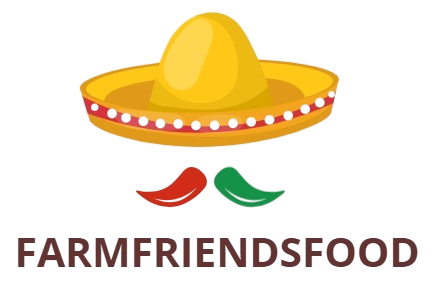When I think of Thanksgiving from my childhood, one image stands out—an entire pineapple, adorned with maraschino cherries, standing proudly atop a platter of cocktail slices of loukaniko sausage. It was a Thanksgiving dinner frozen in time, a nostalgic snapshot of the 1960s, with its moss-green carpets, wood paneling, and an abundance of food that was equally American and distinctly Greek. My yiayia’s house—where this scene played out—was a place where both cultures coexisted, and a meal wasn’t just a culinary affair; it was a celebration of family, heritage, and history.
The spread was both classic and curious: the turkey, of course, was garlicky and roasted to perfection, but the stuffing was filled with ground beef rice pilaf, and the potatoes were roasted in a tangy lemony glaze. Alongside the staples of American Thanksgiving—cranberry sauce, jellied from the can, and a big punch bowl filled with orange juice, ginger ale, and grenadine—there were spanakopita and pastitsio, those comforting Greek dishes that wove the story of my heritage into the holiday. It was an eclectic mix, combining traditional Americana with the warmth of my Greek roots.
However, while Thanksgiving was undoubtedly Greek for me, I was also navigating my identity as a Korean girl growing up in suburban Andover, Massachusetts. Though my mother’s family made sure to pass down Greek traditions, my father, in his own attempt to help me assimilate, taught me how to cook spaghetti, ravioli, and burgers, while also nurturing my love for Korean dishes. We shared our cravings for Korean food, finding joy in simple but soul-satisfying dishes like boiled oxtails with kkakdugi (radish kimchi), a perfect fusion of hot, fatty meat with the cool, spicy crunch of kimchi.
It wasn’t until I moved to New York City to pursue my culinary career that I began to more deeply explore my Korean heritage. As I immersed myself in the flavors and culture of Koreatown, I became particularly captivated by banchan, the small, flavorful side dishes that are served alongside almost every Korean meal. Whether it’s kimchi, marinated potatoes, or blanched greens, banchan offers a wealth of variety and balance, and it quickly became clear to me that these dishes were much more than just accompaniments—they were the heart of a Korean meal, adding depth and contrast to the table.
Banchan fascinated me not only for their taste but also for the joy they brought to the dining experience. Watching a table filled with these vibrant, carefully prepared dishes, I noticed something magical. As each banchan is placed on the table, there’s an immediate sense of giddiness. Chopsticks fly, elbows nudge, and laughter fills the air as everyone dives into the colorful spread. It’s like unwrapping presents at Christmas, with each dish a new gift waiting to be tasted.
The more I worked in kitchens and explored my identity through food, the more I realized the deep connection between food and memory, heritage, and personal history. When I was asked to create a Korean-American Thanksgiving menu, I couldn’t help but think of those early Thanksgivings spent in my yiayia’s house—the blending of Greek and American traditions. The challenge was to do something similar but with a distinctly Korean twist, honoring both my culinary background and my cultural identity.
This Korean-American Thanksgiving menu might not be what you’d expect. It doesn’t feature turkey in the traditional sense, nor does it strictly follow the classic flavors of the American holiday. But like my yiayia’s spread, it’s both familiar and new. It combines fall flavors and comforting elements with a touch of Korean influence, offering a meal that feels distinctly American in its generosity, even as it embraces a Korean spirit.
What stands out most about this Korean-American Thanksgiving meal is its sense of abundance. Like the grand Thanksgiving feasts of my childhood, there’s no shortage of food. In fact, there’s an overabundance of dishes, each more delicious than the last. It’s a meal that will not only feed your family but also leave you with plenty of leftovers to share with your neighbors. The flavors are bold and vibrant, with a focus on balance—sweet, salty, spicy, and sour—and each dish complements the others in perfect harmony.
While the menu may seem unconventional, it does what Thanksgiving is supposed to do: it brings people together. It reminds us that food is not just about taste; it’s about tradition, family, and love. It’s about celebrating who we are and where we come from, all while welcoming new influences and creating something unique.
Much like my yiayia’s Thanksgiving—where Greek-American traditions met the classics of Americana—this meal combines the flavors of my childhood with my experiences as a chef and my journey into my Korean heritage. It’s an American Thanksgiving meal, but one that speaks to a much broader narrative, embracing both my family’s immigrant story and my own culinary evolution.
So, while this Korean-American Thanksgiving may not feature the typical pumpkin pie or mashed potatoes, it offers something just as special—a celebration of what it means to be American in all its complexities. Just like my yiayia’s pineapple-studded dish or the bacon-wrapped treats on the table, this meal invites us to mix and match, to explore new flavors, and to appreciate the many layers of our identities. After all, Thanksgiving is not just about the food we eat—it’s about the stories we tell, the memories we create, and the connections we build, one dish at a time.



